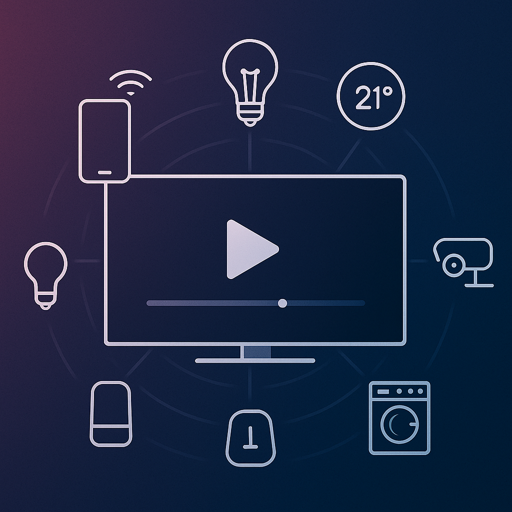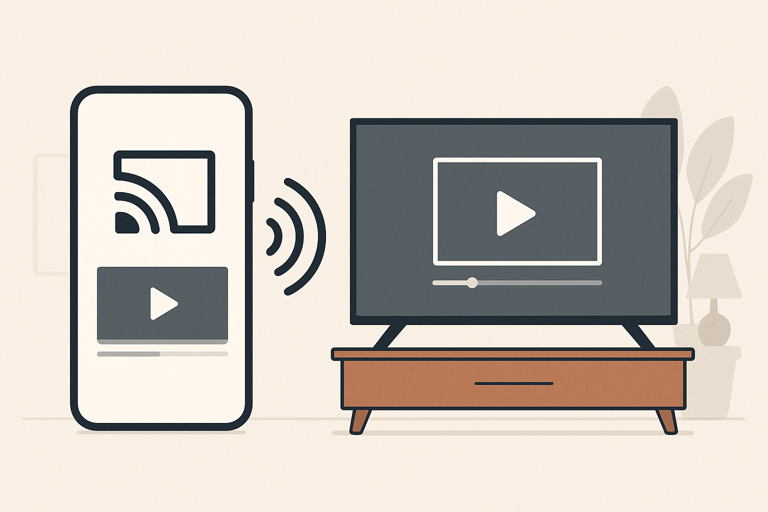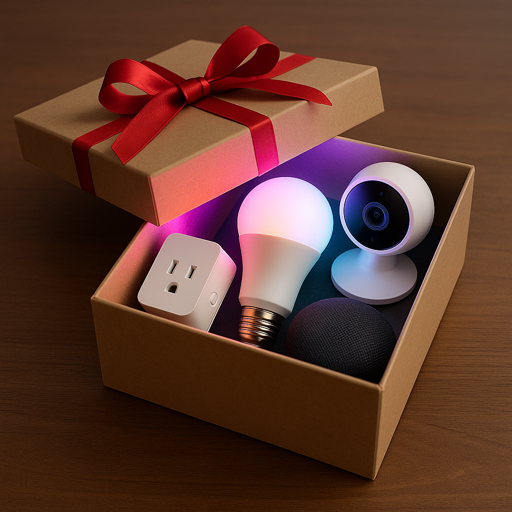This post may contain affiliate links. If you click through and make a purchase, we may earn a commission at no additional cost to you. This helps support our work and allows us to continue providing valuable content. For more information, please see our disclosure policy.

When we think of casting, most people picture Chromecast or AirPlay. Both work well, but they’re tied to specific ecosystems – a considerable limitation in today’s multi-device, multi-brand homes. Enter Matter Casting: an open, cross-platform alternative built into the Matter standard, the Wi-Fi/Thread-based protocol designed to unify the Internet of Things (IoT).
Matter Casting lets you stream audio, video and app level content from one Matter compatible device to another, regardless of manufacturer. In practice, that could mean casting a show from your iPhone to a Samsung TV, controlling playback with an LG remote and still using your phone for other tasks, all without ecosystem lock-in.
How Matter Casting Works
Unlike simple screen mirroring, Matter Casting is app aware. The receiving device doesn’t just mirror your phone’s display. Instead, it runs its own native version of the app (like Prime Video). That means features like 4K HDR, surround sound, subtitles and Amazon’s X-Ray remain available on the target device.
Technically, this is enabled by Matter’s Application Cluster Specification, which standardizes how devices communicate for casting, media control and playback state. Think of it as a universal language for casting commands, creating a smooth handoff between phone and TV.

Why Matter Casting Matters
Matter Casting addresses several pain points of existing casting solutions, including:
- Cross-platform compatibility: Works across Apple, Google, Amazon, Samsung and any other Matter certified device.
- Open standard: Royalty free and easier for developers to adopt.
- Security: Built on Matter’s mandatory Device Attestation Certificates (DACs) and end-to-end encryption.
- Future-proofing: Extensible beyond media into IoT integration.
Picture this: you’re watching a movie and your TV quietly notifies you that “the washing machine cycle is done” or “a package was delivered.” These are contextual updates that connect entertainment and smart home experiences.
Current Adoption
Support is still early but growing. Amazon has taken the lead with Fire TV devices, Fire TV OS smart TVs, and the Echo Show 15. The Prime Video app (iOS/Android) is the main showcase today. Other services are in development.
Current Support Matrix
| Platform / Device | Status | Notes |
|---|---|---|
| Prime Video app | ✅ Supported (iOS & Android) | Full feature parity |
| Fire TV Stick 4K Max, Fire TV Cube | ✅ Supported | Native app integration |
| Fire TV OS Smart TVs | ✅ Supported | Built-in compatibility |
| Echo Show 15 | ✅ Supported | Video and audio casting |
| Plex | 📅 Planned 2025 | Beta testing underway |
| Pluto TV, Sling TV, STARZ | 📅 Planned 2025 | Development confirmed |
How It Compares
| Feature | Matter Casting | AirPlay | Chromecast |
|---|---|---|---|
| Protocol | Open standard | Proprietary (Apple) | Proprietary (Google) |
| Hardware needed | None | Apple TV or compatible device | Chromecast or Google TV |
| Cross-platform | Yes | Limited to Apple | Limited to Google |
| Security | DACs + encryption | Apple security | Google security |
| Unique features | IoT notifications, local mesh integration | Apple ecosystem perks | Google ecosystem perks |
| Content quality | Up to 4K HDR | Up to 4K HDR | Up to 4K HDR |
Matter Casting is designed as part of a wider IoT ecosystem, leveraging the same local networks that control smart lights, thermostats and security devices.
Security Model
Matter Casting follows Matter’s security first approach.
- Device authentication: Every device must have a verified Device Attestation Certificate (DAC).
- Content protection: Enterprise grade digital rights management (DRM), watermarking and anti-piracy tools.
- Encrypted communication: All commands and streams are secured.
- Local priority: Favors local network routing for lower latency and fewer external threats.
This makes it attractive not only for consumers, but also for enterprise, education and hospitality deployments.
What’s New in Matter 1.3
The Matter 1.3 update (May 2024) expanded casting to include push notifications to TVs. Your television can now act as a smart home hub as well as a media display.
Examples of Notifications
- Safety and security: smoke alarm alerts, motion detection, water leaks
- Appliance status: washing machine cycle complete, oven preheated
- Delivery and access: package arrival, doorbell visitor notifications
- Energy and utilities: peak energy use, solar panel production, battery status
Notifications are designed to be subtle during viewing, but more prominent when the screen is idle.
Industry Challenges
For all its promise, Matter Casting also faces its own hurdles.
- Ecosystem inertia: Apple and Google may resist supporting an open standard.
- Consumer awareness: Few know what Matter is, let alone Matter Casting.
- Implementation costs: Smaller developers may struggle with integration.
- Content industry caution: Studios and services may wait for clear demand.
On the flip side, increasing regulatory emphasis on interoperability, the reduced licensing costs of open standards and the steady growth of smart home adoption are all factors expected to support Matter’s long term success.
Who Benefits Most Right Now
- Smart home enthusiasts: Gain unique value from IoT notifications and cross-device compatibility.
- Apple and Google users: Limited benefit today, but helpful in mixed brand households.
- Enterprise and education: Security model and royalty free standard make it attractive.
- Content creators: Open standard could mean more direct relationships with viewers over time.
Casting the Future
Matter Casting won’t replace AirPlay or Chromecast overnight. And in all honesty, it doesn’t need to. Instead, it offers something we’ve never had before – a way to stream content that works with any device, regardless of brand.
Today, Amazon is leading the charge, making Prime Video work seamlessly with Fire TV through Matter Casting. But imagine if this expanded to Netflix from your iPhone to your Samsung TV, YouTube from your Android tablet to your LG display, or Spotify from any device to any smart speaker, all without worrying about compatibility.
The real breakthrough isn’t just better streaming. As more companies adopt Matter Casting, your TV could evolve into the control center for your entire smart home. Movie night? Lights dim automatically. Too warm? Adjust the thermostat from the same screen. Curious who rang the doorbell? Pull up your security feed without switching apps or devices.
Matter Casting represents more than another way to watch videos. It’s about building a world where your devices actually work together instead of fighting each other. And for anyone tired of the endless “this doesn’t work with that” frustration, that’s a future worth getting excited about.

